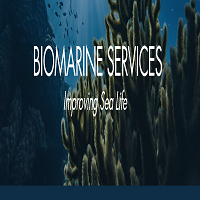As the world grapples with the escalating impacts of climate change, organizations and governments are increasingly recognizing the importance of developing effective Greenhouse Gas (GHG) strategies. These strategies are essential for mitigating emissions, enhancing sustainability, and aligning with global climate commitments. In this article, we will explore the key components of a successful GHG strategy, the steps involved in its development, and the benefits it offers.
Understanding GHG Emissions
Greenhouse gases, including carbon dioxide (CO2), methane (CH4), and nitrous oxide (N2O), trap heat in the earth’s atmosphere, leading to global warming and climate change. The major sources of GHG emissions include:
- Energy Production: The burning of fossil fuels for electricity and heat.
- Transportation: Emissions from vehicles, ships, airplanes, and trains.
- Industrial Processes: Emissions from manufacturing and construction activities.
- Agriculture: Emissions from livestock digestion, manure management, and the use of synthetic fertilizers.
- Waste Management: Emissions from landfills and waste treatment processes.
To combat climate change, it is crucial to develop strategies that target these key sectors, aiming for significant reductions in GHG emissions.
Key Components of a GHG Strategy
1. Assessment and Inventory
The first step in developing a GHG strategy is to conduct a comprehensive assessment of current emissions. This involves creating a GHG inventory that quantifies emissions across various sectors and operations. Organizations can use tools such as the GHG Protocol or local regulatory frameworks to guide their inventory processes.
2. Setting Targets
After establishing a baseline of emissions, organizations should set clear, measurable targets for reducing GHG emissions. These targets should be ambitious yet achievable, often aligning with national or international climate goals such as the Paris Agreement. It is beneficial to adopt a timeline for these targets, aiming for both short-term and long-term reductions.
3. Developing Reduction Strategies
Once targets are set, organizations can develop strategies to achieve them. Some effective reduction strategies include:
- Energy Efficiency: Implementing energy-saving technologies and practices to reduce energy consumption.
- Renewable Energy: Transitioning to renewable energy sources such as solar, wind, and hydroelectric power.
- Sustainable Transportation: Promoting the use of public transportation, electric vehicles, and alternative fuels.
- Waste Reduction: Implementing recycling and composting programs to minimize waste and associated emissions.
- Sustainable Agriculture Practices: Encouraging practices that reduce emissions from agricultural operations, such as no-till farming and precision agriculture.
4. Implementation and Monitoring
Effective implementation of the GHG strategy is crucial for success. Organizations should allocate resources and responsibilities for executing the plan. Additionally, regular monitoring and reporting on progress toward targets are essential for accountability and transparency. Utilizing software tools can aid in tracking emissions and assessing the effectiveness of reduction measures.
5. Engagement and Communication
Engaging stakeholders, including employees, customers, and the community, is vital for the success of a GHG strategy. Organizations should communicate their commitment to reducing emissions and seek input and collaboration from stakeholders. This can help build support and encourage broader participation in sustainability initiatives.
6. Review and Adaptation
Finally, organizations should regularly review their GHG strategy and make necessary adjustments based on performance, technological advancements, and changing regulatory landscapes. This adaptive management approach ensures that strategies remain effective and aligned with evolving climate goals.
Benefits of a GHG Strategy
Developing and implementing a robust GHG strategy offers numerous benefits:
- Regulatory Compliance: Organizations can ensure compliance with existing and future regulations related to emissions.
- Cost Savings: Energy efficiency measures and the transition to renewable energy can lead to significant cost savings over time.
- Enhanced Reputation: Demonstrating a commitment to sustainability can enhance an organization’s reputation, attracting customers and investors.
- Risk Mitigation: A proactive GHG strategy can help organizations mitigate risks associated with climate change, including operational disruptions and supply chain challenges.
- Contribution to Global Goals: By reducing GHG emissions, organizations contribute to global efforts to combat climate change, supporting the health of the planet for future generations.
The Role of Innovation in GHG Strategies
Innovation plays a critical role in the effectiveness of GHG Strategy. As technology evolves, new solutions emerge that can significantly enhance emissions reduction efforts. For instance, advancements in carbon capture and storage (CCS) technologies can help industries manage emissions more effectively, while smart grid technologies can optimize energy use and integrate renewable sources more efficiently. Furthermore, innovative practices in supply chain management, such as circular economy principles, enable organizations to minimize waste and maximize resource efficiency. Collaboration with startups and tech companies can lead to the development of groundbreaking solutions tailored to specific challenges. Moreover, fostering a culture of innovation within organizations encourages employees to contribute ideas and participate in sustainability initiatives, driving engagement and commitment. Ultimately, by embracing innovation, organizations can not only meet their GHG reduction targets more effectively but also position themselves as leaders in the transition to a sustainable and resilient economy.
Conclusion
A well-structured Greenhouse Gas strategy is crucial for organizations seeking to navigate the complexities of climate change while promoting sustainable development. By assessing emissions, setting targets, implementing reduction strategies, and engaging stakeholders, organizations can significantly reduce their environmental impact and contribute to a more sustainable future. The journey toward a low-carbon economy may be challenging, but the rewards—both for the planet and for businesses—are well worth the effort.














Leave a Reply